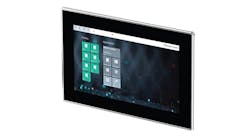Check out the AR/VR mini series
There are several essential steps needed to implement augmented, virtual or mixed reality solutions. Individual applications may need others, but here are the basic requirements:
- Identify the problem or use case that AR can help solve;
- View online videos or other presentations of the various AR, VR and MR technologies in use to learn how they function.
- Play with any readily available AR/VR or wearable devices, such as Microsoft HoloLens, Google Glass, Oculus Rift or others. This can be help users explore how AR/VR works, and show where they might be most useful.
- Determine if the process application where AR/VR could be used is indoors or outdoors, which can affect which technology to employ.
- Decide if the AR/VR user can use a hands-on device such as a tablet PC, or if they need a hands-free or voice-activated device such as a wearable headset.
- Evaluate what information should be presented on the AR/VR device and how it will be delivered, such as documents, manuals, real-time signals and SCADA.
- Decide what remote expertise may be needed by field staff, and determine the best AR solution for connecting them.
- Design and develop an AR pilot that solves problems identified earlier, gather return on investment (ROI) data, and scale up after pilot proves itself.
About the author: Jim Montague
Latest from HMI
Latest from HMI







